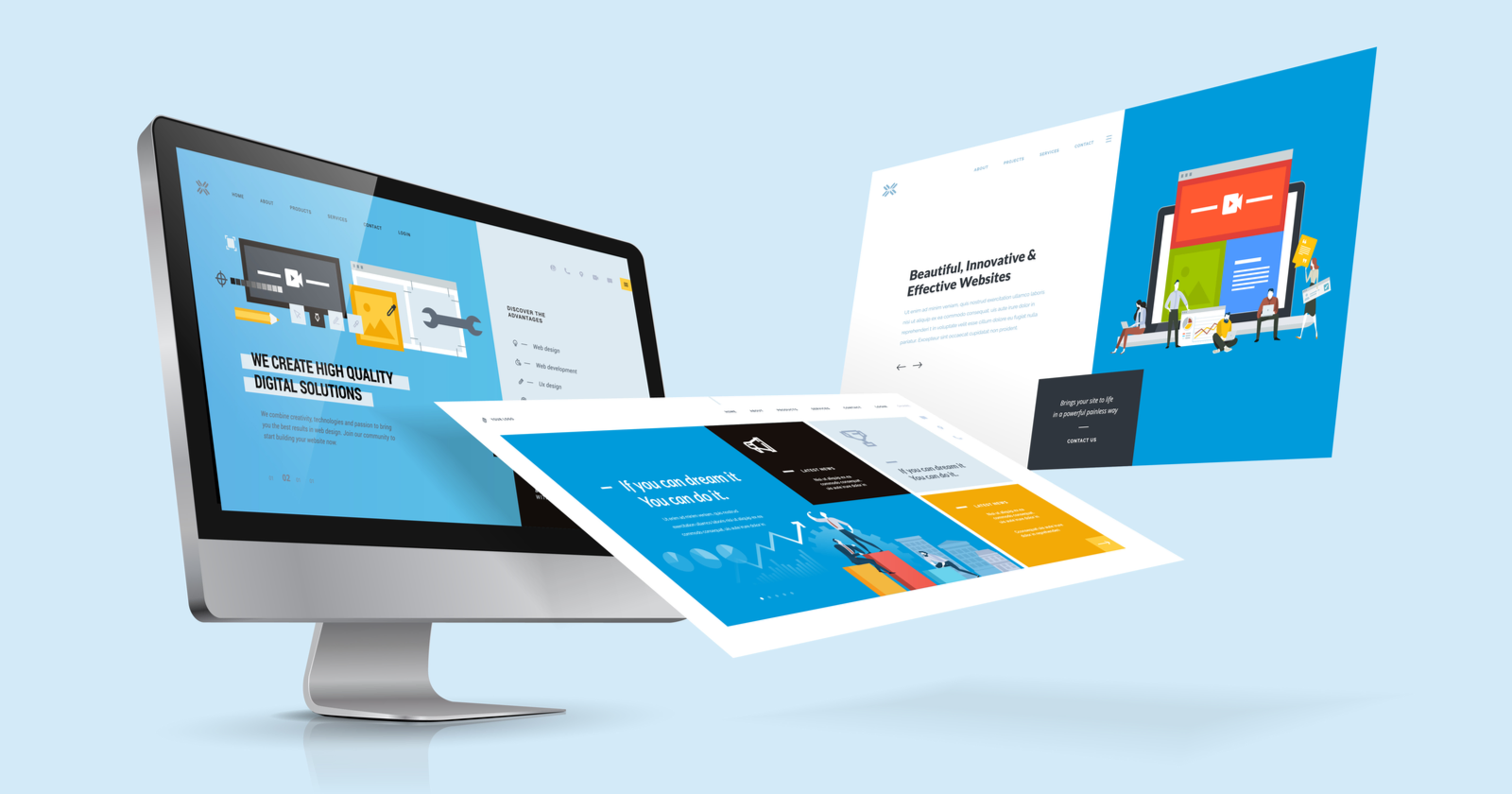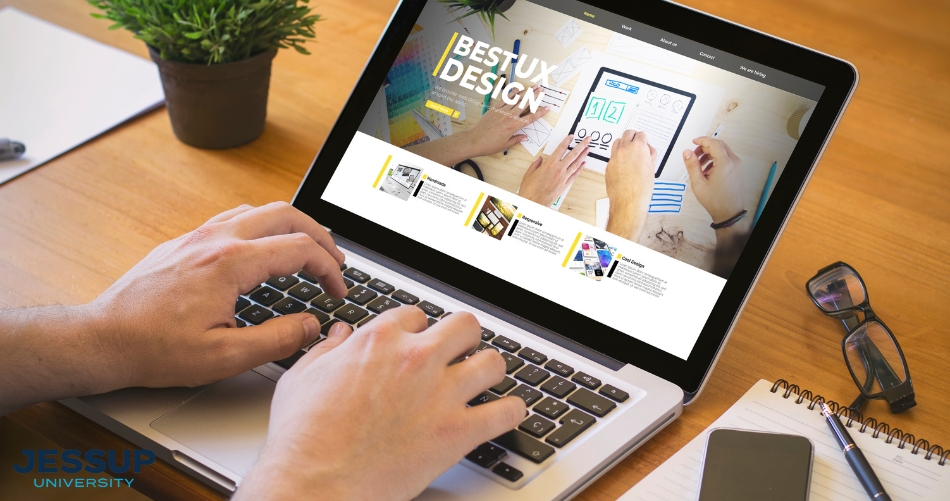How to Effectively Integrate Appearances and Functionality in Website Design
When developing a web site, you need to strike a balance in between aesthetics and performance. It's not nearly looking excellent; your design ought to additionally offer an objective and overview customers effectively. By concentrating on simpleness and intuitive navigating, you can produce an engaging experience. However what components genuinely boost use while maintaining aesthetic appeal? Let's check out the crucial principles that can bring about an unified blend of appeal and feature.
Comprehending the Relevance of Looks and Functionality
Understanding the balance in between aesthetics and performance is important for producing an efficient individual experience when you make an internet site. A visually enticing site grabs interest, however it's the functionality that maintains individuals engaged. Visitors will promptly shed interest and leave.Consider your target audience and what attracts them in if your website looks fantastic yet is tough to navigate. You wish to develop a style that shows your brand name while making certain simplicity of use. Streamlined formats, intuitive navigation, and clear telephone calls to activity can boost both appearances and performance.

Concepts of Effective Website Design
To produce an effective website design, you require to follow several crucial principles that improve both individual experience and visual charm. Initially, prioritize simpleness; a clean design aids customers navigate quickly. Make use of a regular color plan and typography to preserve comprehensibility throughout your website. This fosters experience and trust.Next, ensure your design is receptive. Individuals access sites on various tools, so your layout should adjust seamlessly. Take note of visual power structure; highlight crucial components with dimension, shade, or positioning to lead individuals' focus.Finally, incorporate enough white space. It protects against mess and makes content more absorbable. Bear in mind, efficient web layout equilibriums aesthetic appeals and performance, so every style choice need to serve a function. By following these principles, you'll develop a website that's not only visually appealing but also user-friendly, eventually keeping visitors engaged and urging them to return.
Prioritizing Customer Experience
When prioritizing customer experience, you'll intend to begin by comprehending what your customers absolutely need. Simplifying navigation style can make a big difference in just how quickly they find what they're searching for. Boosting aesthetic pecking order helps guide their focus to the most crucial aspects on your site.
Understanding Customer Needs
Understanding customer demands is important for producing an engaging internet experience that keeps visitors returning. To achieve this, you should recognize the objectives and preferences of your target market. Begin by performing customer research study, like studies or meetings, to gather understandings on what customers value most. Take notice of their pain points and obstacles when engaging with similar web sites. This information allows you to tailor your style, making sure performance straightens with individual expectations. Additionally, take into consideration creating individual personas that stand for various sectors of your target market, helping you imagine their needs throughout the layout process. When you focus on recognizing user needs, you create a website that not just looks wonderful yet additionally delivers a seamless, delightful experience that cultivates loyalty.
Simplifying Navigating Style

Enhancing Visual Power Structure
A solid visual power structure is necessary in leading users with your web site and ensuring they engage with vital web content. To attain this, utilize dimension, color, and spacing tactically. Make important aspects like headings larger and bolder than body text, drawing attention promptly. Use contrasting shades to highlight phone calls to activity, urging clicks. Furthermore, use sufficient white space to separate sections, making content absorbable and inviting.Consider the circulation of info; set up components practically, leading users' eyes from one indicate the following. Use visual hints, like arrows or lines, to guide interest. By focusing on aesthetic power structure, you enhance user experience and boost the chance of conversions, ensuring your web site is both visually pleasing and functionally efficient.
Shade Concept and Its Impact on Usability
While selecting the best colors for your site might feel like a small detail, it substantially influences usability and individual experience. Shade impacts how individuals view information and can enhance or prevent navigating. Contrasting shades can assist important components stand out, making it simpler for visitors to locate what they need.Additionally, consider the psychology of shades: blue frequently inspires trust, while red creates seriousness. Knowing your target audience can lead your shade options, assuring they reverberate well.Moreover, constant color design aid build brand identity, making your site more remarkable. However, be mindful-- also numerous shades can bewilder customers. Stay with a restricted scheme that complements your content and keeps clarity.Incorporating ease of access is additionally necessary; verify your shade combinations are pleasant for those with visual impairments. By attentively applying Source shade concept, you'll improve functionality and develop a more engaging user experience.
Typography: Balancing Style and Readability
Color choices set the stage for your web site, yet typography plays a similarly essential role in boosting customer experience. You desire your message to interact plainly while likewise mirroring your brand's individuality. Begin by picking font styles that are not just attractive however also readable. Sans-serif typefaces frequently function well for electronic displays, as they're simpler to check out at numerous sizes.Maintain a hierarchy by utilizing various font style sizes and weights; this guides customers via your web content easily. Think about line spacing and letter spacing; as well tight can irritate viewers, while as well loose can interrupt the circulation. Limit your typeface selections to two or 3 to keep the layout cohesive.Finally, always test your typography throughout various devices and internet browsers. What looks excellent on one display might out one more. Balancing style with readability assurances that your message resonates, maintaining your audience involved and informed.
Receptive Layout: Making Visual Appeals Function on All Gadgets
To ensure your website looks terrific on any type of tool, you'll need to welcome responsive layout concepts. This strategy assurances your website adapts to different display dimensions, offering an excellent customer experience. Beginning by making use of fluid grids and versatile photos that scale seamlessly. As opposed to dealt with measurements, select percents and family member units, allowing your format to readjust dynamically.Next, apply media inquiries in your CSS. These let you apply different styles based upon gadget features, like display width. In this manner, you can maintain aesthetic charm while assuring functionality.Don' t forget touch targets; ensure switches and web links are very easy to tap on smaller displays. Prioritize important material, so customers can conveniently navigate your site despite their tool. By concentrating on these elements, you'll develop an appealing, aesthetically appealing experience that satisfies the needs of all customers, whether they're on a tablet computer, smart device, or desktop computer .
Performing Usability Screening for Continuous Improvement
To enhance your web style, you require to set clear functionality objectives that align with individual needs. By carrying out customer examinations, you can collect useful feedback on exactly how real people interact with your site. Assessing these results will certainly assist you make informed renovations and create an web link extra reliable user experience.
Defining Functionality Goals
While appearances can draw individuals in, specifying usability objectives is crucial for ensuring their experience stays rewarding and seamless. Beginning by recognizing what you want individuals to accomplish on your site (website design london Ontario). Consider their behaviors, demands, and tasks. Are they trying to find information, making a purchase, or enrolling in a newsletter? Establish clear standards to determine success, like task conclusion prices or time on job. Prioritize instinctive navigating, easily accessible web content, and receptive layout to enhance functionality. Routinely review these objectives as user assumptions advance. By defining functionality objectives, you create a framework for examining and boosting your site's efficiency. This concentrate on usability not just increases customer complete satisfaction however additionally enhances the overall performance of your layout
Performing Individual Tests
Performing customer tests is essential for fine-tuning your website and guaranteeing it satisfies your target market's requirements. Start by determining your target customers and developing an examination strategy that describes your objectives. Utilize a mix of measurable and qualitative methods, such as surveys, interviews, and task-based monitorings, to collect detailed responses. Welcome participants to navigate your site while you observe their interactions and note any problems they encounter. Encourage open dialogue to capture their ideas and feelings concerning the style and functionality. Maintain sessions brief and focused, guaranteeing you cover essential areas without frustrating users. Make sure to record all searchings for, as this info will certainly be invaluable for making informed layout choices that boost both looks and use.
Evaluating Examination Outcomes
Exactly how can you efficiently examine the outcomes of your usability examinations to drive continual improvement? Beginning by classifying responses into common styles. Look for patterns in user behavior that highlight discomfort points or locations for enhancement. Use measurable information, like job conclusion prices and time on task, to measure usability objectively. Do not fail to remember to consider qualitative understandings from individual informative post comments; they often disclose underlying problems that numbers can not show. Focus on the most impactful searchings for and develop actionable things for your design team. Remember, it has to do with iterating-- apply modifications, then examination once again. This cycle of screening, analyzing, and refining assists you equilibrium appearances and capability, guaranteeing your internet site fulfills user needs efficiently while keeping visual charm.
Regularly Asked Questions
How Do I Pick the Right Shade Palette for My Website?
To pick the appropriate shade scheme for your website, consider your brand's character, target audience, and emotional impact (website design london Ontario). Use color psychology, create consistency, and guarantee readability. Test mixes to see what resonates best with site visitors
What Tools Can Aid With Website Design Looks and Capability?
You can make use of devices like Adobe XD, Figma, and Map out to improve your website design's aesthetics and performance. These platforms use user-friendly interfaces, partnership functions, and pre-made templates to simplify your imaginative process and boost your layouts.
How Can I Include Animations Without Compromising Performance?
To integrate computer animations without jeopardizing performance, focus on refined impacts that improve customer experience. Usage CSS animations for smoother interactions, guarantee quick load times, and test on numerous tools to preserve performance while adding aesthetic allure.
What Are Common Mistakes to Stay Clear Of in Website Design Visual Appeals?
When developing, stay clear of cluttered layouts, poor shade options, and irregular fonts. Don't forget mobile responsiveness, as it can push away users. Validate your layout aligns with your brand name, creating a smooth experience that engages site visitors successfully.
Just how Often Should I Update My Site's Layout for Optimum Aesthetics?
You should update your web site's style every 1-2 years to stay on par with patterns and keep perfect appearances. Frequently restoring visuals assists engage assurances and visitors your website remains straightforward and appealing. When you develop a site, recognizing the balance between visual appeals and capability is vital for producing an efficient customer experience. To produce an effective internet design, you need to adhere to numerous vital concepts that boost both user experience and aesthetic charm. Individuals gain access to web sites on various tools, so your layout ought to adapt perfectly. When focusing on user experience, you'll desire to begin by comprehending what your users genuinely need. Begin by conducting customer study, like studies or meetings, to collect understandings on what customers value most.